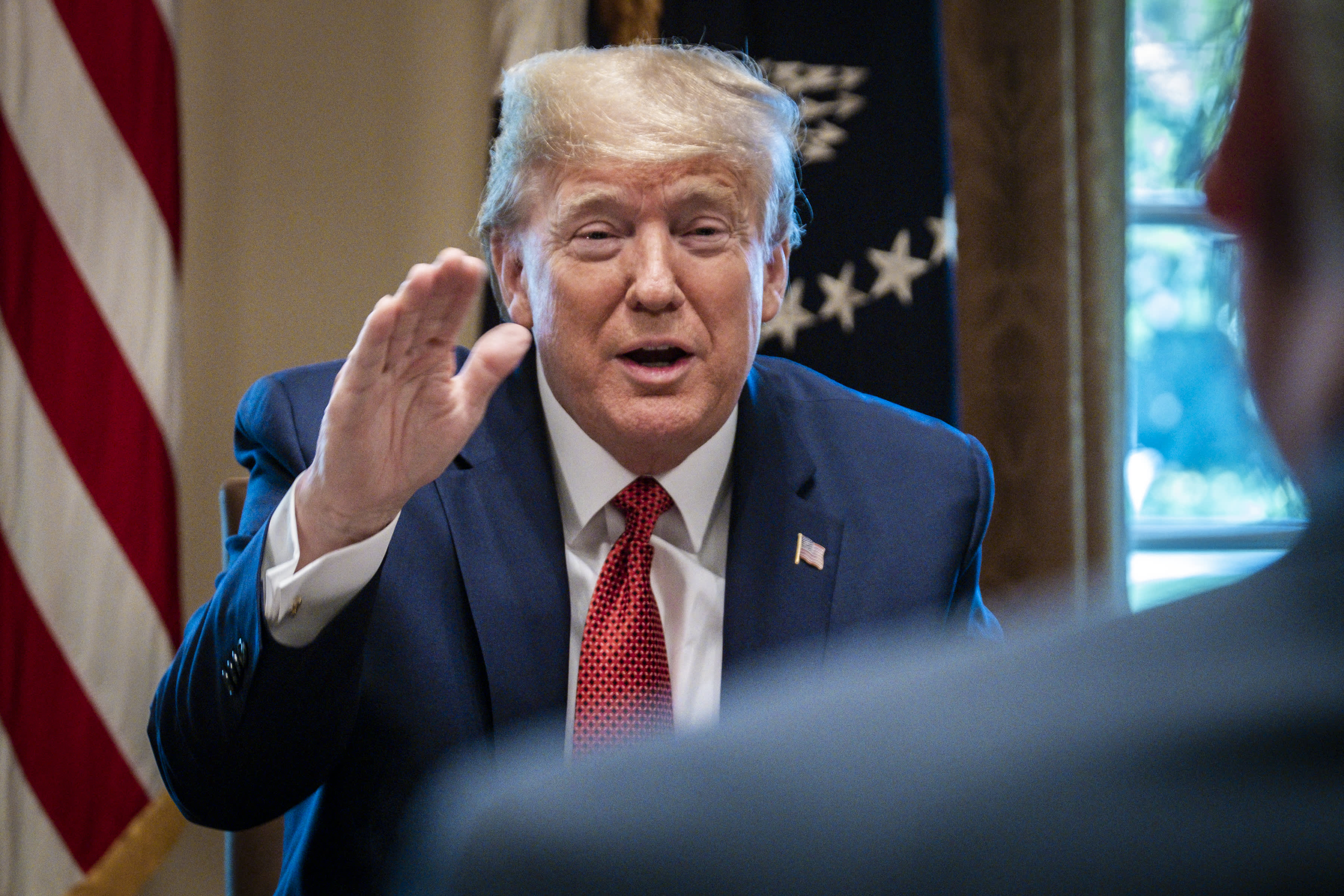President Donald Trump meets with supply chain distributors in reference to the COVID-19 coronavirus pandemic, in the Cabinet Room in the West Wing at the White House on Sunday, March 29, 2020.
Pete Marovich | Getty Images
The ink is barely dry on the new coronavirus relief bill, yet tax mavericks are hatching strategies around the retirement savings provisions.
Last Friday, President Donald Trump signed the $2 trillion package into law. The measure contained several provisions aimed at loosening rules governing retirement accounts.
One change allows retirement savers to take “coronavirus-related distributions” of up to $100,000 from their 401(k) plans and individual retirement accounts without the 10% penalty that normally applies to people under age 59½.
If you take this distribution, you have three years to pay the taxes and replace the funds, above the normal caps on yearly contributions.
As financial advisors and tax experts digest the law, strategies are beginning to emerge.
“There are going to be some things that people are doing that feel like they don’t fit the purpose of the law,” said Jamie Hopkins, director of retirement research at Carson Group. “You have to remember that the bill was put together very quickly to give broad-based relief.”
Here are a couple of tactics that are making the rounds in accounting circles.
Replacing an RMD
As part of the new law, Congress is permitting savers to skip so-called required minimum withdrawals or RMDs from their retirement accounts in 2020.
These mandatory withdrawals must be taken each year after account holders turn 70½. The Secure Act passed last year raised the RMD start age to 72 beginning in 2020.
While early birds who took this year’s RMDs during the first week of January are out of luck, those who waited until February or March may be able to reverse the transaction if they meet certain conditions, said Ed Slott, CPA and founder of Ed Slott & Co. in Rockville Centre, New York.
More from Smart Tax Planning:
Tax Day is July 15. Why you should get your return in sooner
Where to get your tax return done for free
Why your tax return may spark interest from the IRS
If you redeposit the withdrawal into the IRA within 60 days of having taken the money and if you haven’t made any rollovers from one IRA to another in the last 12-month period, you can redeposit the RMD you took earlier this year, Slott said.
Just be sure that when you roll the money back in, you make up any amounts deducted for taxes.
“Maybe you took $10,000 for an RMD, but you really received $7,000 because $3,000 went to taxes,” said Dave Du Val, enrolled agent and chief customer advocacy officer for TaxAudit.
“To beat the taxman entirely you must cover the taxes and put the money back in,” he said.
Creative conversions
FabrikaCr | iStock | Getty Images
One dubious strategy popping up is taking a $100,000 “coronavirus-related” distribution from your traditional pre-tax retirement account, stashing the money into a tax-free Roth IRA and paying the resulting taxes over three years.
This might not pass muster with the IRS, and experts suggest avoiding the tactic.
Withdrawing the full $100,000 from an IRA or a 401(k) and then depositing it into a Roth IRA may be treated as an excess contribution by the IRS — that is, a deposit that runs over the $6,000 limit (plus $1,000 for those aged 50 and over) for 2020, said Hopkins.
Excess contributions are subject to a 6% tax as long as the additional cash remains in the account.
What would be kosher, however, is just converting a portion of your IRA to a Roth – and doing so without a creative interpretation of the COVID-19 relief bill.
“There’s definitely the argument now that you should just think about converting because tax rates and account values are both down,” said Hopkins.
